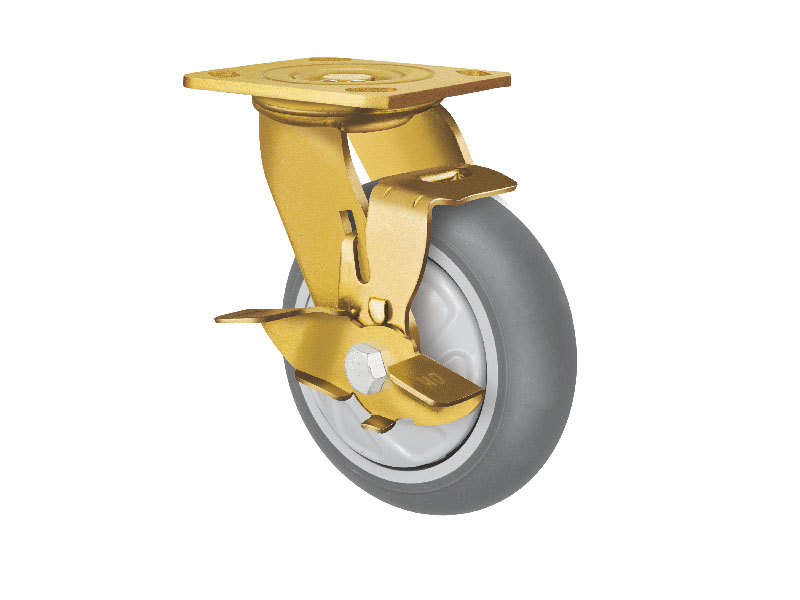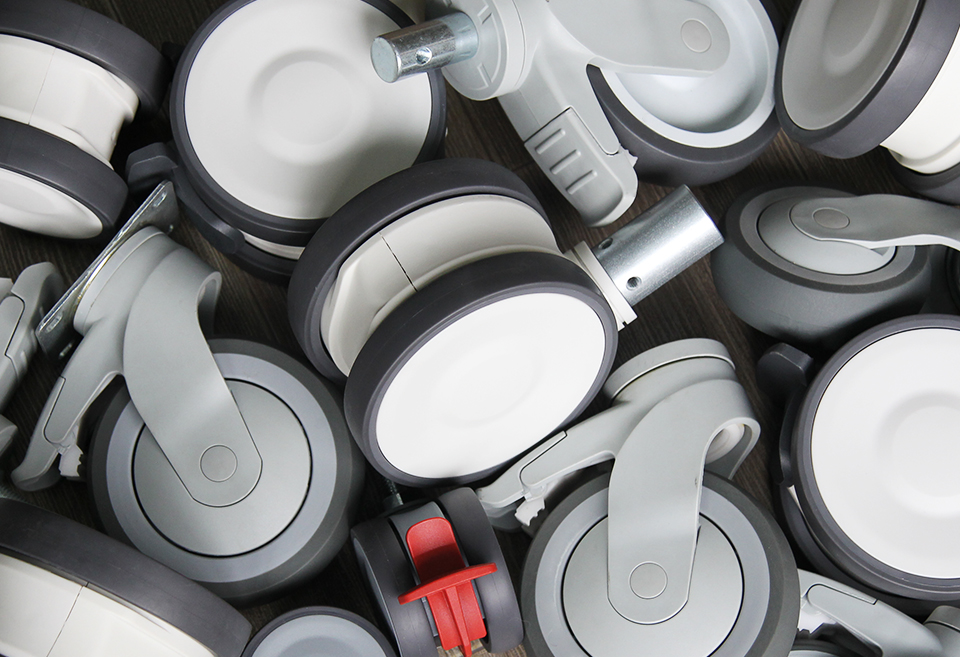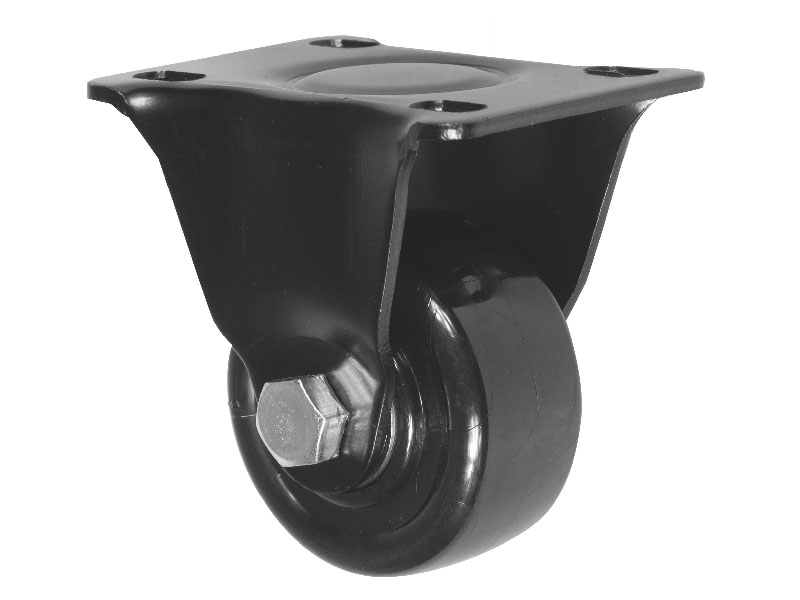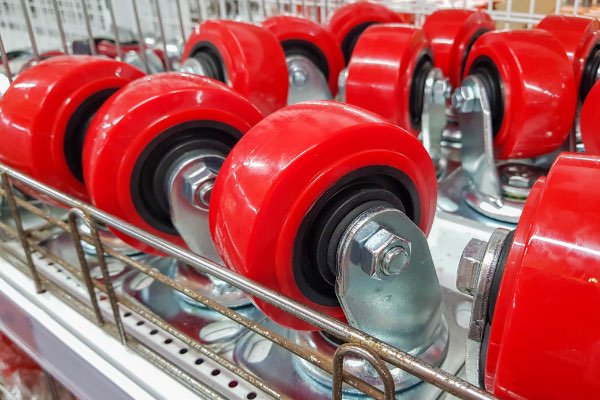Casters, often overlooked in their significance, play a pivotal role in numerous industries where mobility is a necessity, facilitating the movement of loads across various environments. From industrial equipment to hospital beds, the choice between rigid and swivel casters can greatly impact the efficiency and functionality of a moving apparatus. Understanding the differences between them is crucial for optimizing performance and ensuring seamless operations in diverse industries.
Rigid Casters: Unyielding Strength
Rigid casters, characterized by their fixed directionality, are the robust workhorses of the caster field. Their design is straightforward yet formidable, making them ideal for applications that demand unyielding strength and stability.
Rigid casters are engineered with a fixed wheel orientation, allowing movement only along a straight path. This eliminates the complexities associated with swiveling mechanisms, providing a solid foundation for heavy-duty applications.
Rigid Caster with Nylon Wheels
Key Characteristics
Fixed Directionality: Rigid casters excel in maintaining a constant direction, making them suitable for scenarios where a straight trajectory is imperative. This characteristic ensures stability during linear movements, reducing the risk of accidents or mishaps.
Higher Load Capacity: The absence of swiveling components in rigid casters contributes to their enhanced load-bearing capacity. This makes them indispensable in environments where substantial weights need to be transported with precision and reliability.
Industrial Applications
Manufacturing Plants: Rigid casters find their niche in manufacturing plants where heavy machinery and equipment require steadfast mobility along predetermined paths. Their stability enhances safety and operational efficiency in these industrial settings.
Heavy-duty Equipment: Equipment such as carts carrying massive loads in warehouses or construction sites benefit from the unwavering support provided by rigid casters. The fixed directionality ensures controlled movements, even when transporting bulky materials.
Swivel Casters: Agile Maneuverability
In stark contrast to their rigid counterparts, swivel casters boast a design that allows wheels to rotate 360 degrees, providing unparalleled maneuverability in confined spaces.
Swivel casters are engineered with a swiveling mechanism that enables the wheel to rotate freely. This design imparts a high degree of agility, making them versatile in applications where changes in direction are frequent.
250Kg Heavy Duty Swivel Caster
Key Characteristics
360-Degree Rotation: The hallmark feature of swivel casters is their ability to rotate a full 360 degrees. This makes them invaluable in settings where intricate maneuvers and swift changes in direction are required.
Versatility in Movement: Swivel casters excel in adapting to dynamic environments, allowing for seamless movement in any direction. This versatility is particularly beneficial in scenarios where navigating through tight spaces is essential.
Industrial Applications
Retail Environments: In retail settings where space is often limited, swivel casters find applications in shopping carts, display racks, and other fixtures. Their agility enables easy navigation through aisles and crowded spaces.
Hospital Settings: The healthcare industry benefits from the nimbleness of swivel casters, especially in medical carts and equipment. The ability to maneuver with precision is crucial in busy hospital corridors and patient rooms.
Comparative Analysis: Strengths & Weaknesses
Understanding the strengths and weaknesses of rigid and swivel casters is vital for making informed decisions based on specific application requirements.
Rigid Casters
Stability in Straight Paths: Rigid casters shine in scenarios demanding consistent, straight-line movement. Their stability is unmatched when a predictable trajectory is essential for safety and precision.
Limitations in Tight Spaces: The fixed directionality of rigid casters becomes a limitation in environments with tight corners or confined spaces, where maneuverability is a priority.
Swivel Casters
Flexibility in Confined Areas: Swivel casters excel in environments with limited space, allowing for fluid movement in any direction. This flexibility is advantageous in applications where agility is paramount.
Potential for Reduced Stability: While swivel casters offer exceptional maneuverability, there may be a trade-off in stability, especially when handling heavy loads. Careful consideration is needed to balance mobility with load-bearing requirements.
Custom Caster & Wheel Solutions
Choosing the Right Caster for the Job
The decision between rigid and swivel casters should be guided by a thoughtful assessment of specific requirements, considering both the immediate application and long-term considerations.
Consideration of Specific Requirements
Workspace Layout: Evaluate the layout of the workspace to determine whether a consistent straight-line movement or agile maneuverability is more critical for efficient operations.
Load Weight and Distribution: Consider the weight and distribution of the loads to be transported. Heavy-duty applications may lean towards rigid casters, while lighter loads in dynamic environments may favor swivel casters.
Cost and Maintenance Factors
Longevity and Durability: Assess the durability and longevity of the casters in relation to the anticipated workload. Rigid casters, with fewer moving parts, often exhibit a longer lifespan, contributing to cost-effectiveness over time.
Ease of Repairs: Factor in the ease of maintenance and repair for both types of casters. While rigid casters may require less frequent attention, swivel casters may need more regular checks due to their intricate design.
Conclusion
The choice between rigid and swivel casters is not a one-size-fits-all decision. It hinges on a thorough understanding of the specific demands of the application, weighing the advantages and disadvantages of each type to ensure optimal performance and longevity.
Whether it’s the unyielding strength of rigid casters or the agile maneuverability of swivel casters, the right choice contributes significantly to the efficiency and safety of material handling in diverse industrial settings.







